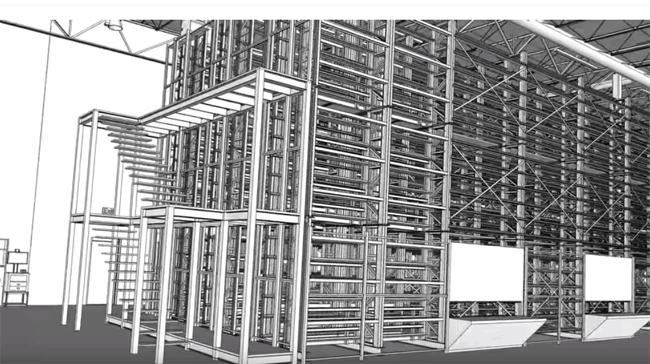Walmart for many years has been recognized as the leader in retail supply chains, using its prowess in logistics in the 1980s through the mid-2000s or so to become the dominant retailer and largest company in the world.
Then came Amazon.
Supply Chain Digest Says... |
|
|
Despite its massive scale that it can leverage, miles of conveyors in its distribution centers, early adoption of continuous replenishment practices and more, Walmart now find it is chasing its on-line rival.
According to a recent article in the UK's The Economist magazine, a senior Walmart executive recently said that "A competitor who will remain nameless…is forcing all of us to think differently, and we should."
And, it turns out, despite its reputation for a highly efficient supply chain, there was lots of room for improvement, especially along one dimension: speed.
For example, according to The Economist article, Walmart has changed process for shipping perishable fruits and vegetables such that it has taken three to four days out of the delivery cycle – pretty important when the shelf life of fresh strawberries is about 12 days after they are picked.
That improvement is coming in part by handling perishables and other fast moving goods differently than other products, in a move Walmart tried some 15 years ago with programs such as Inventory DeLoad, but apparently still not fully perfected. It is now highly focused on the smooth and rapid flow of goods from its DCs to stores.
In that effort, it is adding for the first time fprautomated storage and retrieval systems in its DCs. It will soon open for the first time a new, highly automated consolidation center in Southern, CA. The technology will allow three to four times more volume in the flow of merchandise, resulting in more nimble and flexible product fulfillment, the company says.
The changes are already positively impacting key metrics.
"Productivity at Walmart's distribution centers, measured in cases per hour, went up 13% in the past 18 months," The Economist notes. "Billions of dollars have been stripped out of inventory. In the most recent quarter, same-store sales in America were up 3.4% on the previous year and e-commerce sales up 37%.
(See More Below)
|
CATEGORY SPONSOR: SOFTEON |
|
|
| |
|
|
TAll that and more chasing Amazon, which has found a way to shift the traditional supply chain tradeoff curve to achieve a "low cost and always in stock" supply chain model driven by process and technology innovation, and a relentless focus on speed – both in a physical sense but importantly also in decision-making.
Walmart is also making similar changes at the store level. For example, it is working with a company called Alert Innovation, which provides an AS/RS grid system upon which its Alphabot robots travel to execute piece picking in the backroom of Walmart stores for ecommerce fulfillment.
Alphabot Storage Grid in Walmart Store Backroom

Walmart is testing the crowdsourcing the last-mile delivery of orders through a service called Spark Delivery, which offers a platform that provides drivers with the ability to sign up for windows of time that work best for their schedule as well as grocery delivery order details, navigation assistance and more.
Alibaba Also Pacesetting
Chinese ecommerce platform Alibaba, which is increasingly turning to the US market, is also pushing the envelope, albeit somewhat differently than Amazon.
Alibaba's logistics unit is investing some $14.5 billion in logistics infrastructure to ensure next-day delivery in almost all of China and three-day delivery anywhere across the globe.
"Our warehouse system is the most heavily used in the world," Alibaba's Ben Wang told The Economist.
Last year, during the so-called Single's Day shopping holiday last November, Alibaba sold an incredible $30 billion-worth of merchandise across its platform in 24 hours.
Shoppers, especially younger consumers, wearing virtual-reality goggles make purchases with a tilt of their heads.
Alibaba also owns a stake in Chinese grocery chain Hema Xiansheng. Even its stores are heavily automated, with bags of groceries speeding by on an overhead conveyor system.
The flying groceries go to an army of waiting couriers, who deliver on=line orders free within a 3-kilometer radius within 30 minutes.
The times they are a changing in retail for sure, and the double A's – Amazon and Alibaba – are clearly driving much of that change for themselves – and rivals.
Any reaction these retail sector dynamics? Let us know your thoughts at the Feedback section (email) or button below.
-
|